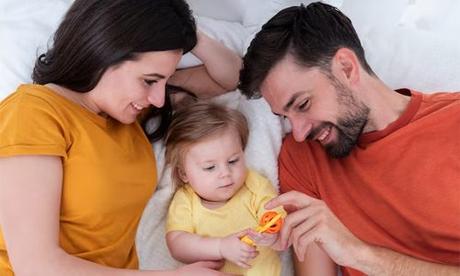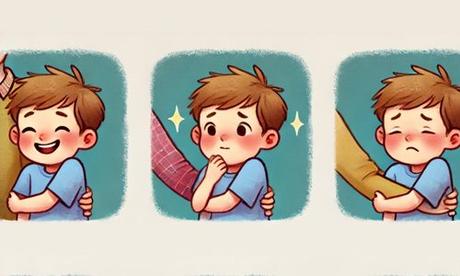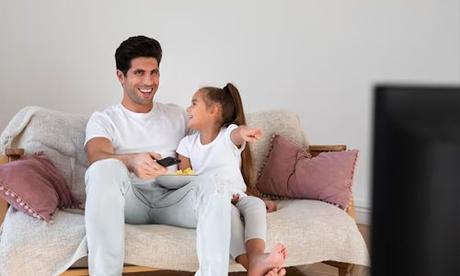As parents, guardians, or caregivers, one of our most important responsibilities is ensuring our children's safety, both physically and emotionally. One of the best ways to protect them is by teaching them about good and bad touch. Talking to your child about safe and unsafe touch may feel uncomfortable, but it's one of the most important conversations you can have to keep them safe. Children need to understand their bodies, personal boundaries, and how to communicate when something doesn't feel right. In this guide, we'll walk you through parenting tips on child safety, how you can start these conversations, and what essential things you need to teach your child.
The Importance of Physical Touch in a Child's Life

Physical touch plays a vital role in a child's emotional and social development. From the time they're born, touch helps build trust, comfort, and security. Safe, loving touches like hugs, kisses, pats, and cuddles from family members help children feel loved and secure. However, as our children grow, it's important to teach them that not all touches are safe or appropriate. This is where the conversation about good and bad touch begins. Parents and caregivers must teach children that while touch can be comforting and kind, it can also be harmful when boundaries are crossed. By opening up this dialogue, we help kids understand the difference and give them the tools to stay safe.
Understanding Abuse: A Conversation That Cannot Be Avoided

While the topic of abuse is uncomfortable, it's a reality that every parent needs to address. We often hesitate to talk about it, thinking that it may scare our children, but child abuse is a reality that can happen anywhere-at home, in school, or even in public spaces. According to research, 1 in 4 girls and 1 in 13 boys in the U.S. experience sexual abuse at some point during childhood. And the saddest part is many cases of abuse happen with someone the child knows and trusts. These statistics highlight the importance of educating our children about good and bad touch.
Three Critical Things to Teach Your Child About Touch
Before discussing good and bad touch, it's essential to lay the groundwork by teaching how to talk to toddlers about bad guys. These three concepts will give them a strong foundation for understanding boundaries and personal safety.
1. Teaching Children the Names of All Body Parts

It's important to teach your child the correct names for all their body parts, including their private parts. This helps them communicate clearly if they need to talk about their body. Using proper terms like "penis" or "vagina" instead of slang words not only normalizes discussions but also helps protect children from potential abuse by giving them the vocabulary to describe uncomfortable situations accurately. A child who can confidently talk about their body can more easily describe inappropriate situations.
2. Helping Children Understand They Are the Boss of Their Body

Children must learn that they have control over their bodies. This includes saying "no" to unwanted touches and emphasizing that no one has the right to touch them without their permission-this includes family members, friends, or even authority figures.
3. Introducing the Three Types of Touches: Safe, Unsafe, and Unwanted

Teach your child about the three types of touches: safe, unsafe, and unwanted, and help them differentiate between these three kinds of touches.
- Safe Touches: These are positive touches like hugs, high fives, and pats on the back, which make them feel loved, safe, and comfortable.
- Unsafe Touches: These touches hurt their body or make them feel uncomfortable, such as hitting or inappropriate touching. Be aware of don't let people touch your private parts.
- Unwanted Touches: These touches are safe but might be unwanted, like a forceful hug when your child doesn't feel like it. Teach them it's okay to refuse a touch, even if it's from someone they love.
The table below can help you distinguish between good and bad touch in a way that's easy for your child to understand.

Touching Safety Rules for Children

To reinforce these concepts, create simple safety rules for your child to follow. These can include:
- No one should touch your private parts except for you (and a parent or doctor when necessary for health reasons).
- If someone tries to touch you in a way that makes you feel uncomfortable, you don't have to keep secrets. Tell a trusted adult immediately.
- You have the right to say "no" if someone touches you in a way that makes you uncomfortable, even if it's someone you know and trust.
Repeating these rules will help your child feel more confident in recognizing and responding to inappropriate situations.
How to talk to a child about inappropriate touching
So far, we've explored what good and bad touch are, the importance of teaching our children about them, and how essential it is for every parent or guardian to be proactive in helping children understand personal boundaries. Now, we'll dive into 10 Possible Ways to Talk to Your Child About Good and Bad Touch.
1. Create a Safe Space for Open Conversations

The first step in addressing sensitive topics is making sure your child feels safe and comfortable talking to you. Let your child know that they can always come to you with questions or concerns-no matter how small without fear . Reassure them that no question is silly or off-limits. If your child brings up something that makes them uncomfortable, listen without judgment and validate their feelings. This will encourage them to share openly in the future if they ever feel unsure or unsafe.
2. Start the Conversation Early and Keep It Ongoing

It's never too early to start talking to your child about body safety. Begin with age-appropriate conversations when they're young, and keep the discussion as they grow. Treat it like any other life lesson-revisit it regularly as they mature.
3. Use Everyday Moments as Teaching Opportunities

You don't need to sit down for a formal talk to discuss good and bad touch. Use everyday moments as teaching opportunities. For instance, during bath time or while dressing, you can explain that certain parts of their body are private. When you're hugging or holding hands, talk about how it's important that they feel comfortable with these touches.
4. Reinforce the Importance of Listening to Their Feelings

Teach your child to trust their instincts. Let them know that if a touch, hug, or interaction ever makes them feel uncomfortable, they should speak up, even if the person is someone they know. They must understand their feelings are valid.
5. Be Honest About Secrets and Surprises

Teach children the difference between surprises and secrets. Explain that surprises, like birthday parties or gifts, are fun and eventually shared, while secrets-especially about touches-should never be kept. Let them know that no one should ask them to keep a secret about any touch and if it happens, they must be honest and tell a trusted adult immediately.
6. Read Books Together About Body Safety

Children often understand complex topics better when they're presented in a fun, relatable way. Use children's books that address body safety and personal boundaries. Books can help them grasp the concepts of good and bad touch, and the stories can serve as conversation starters. Follow up the reading with a discussion to make sure they understand the message.
7. Practice Role-Playing Scenarios

Role-playing different scenarios can help your child practice what to say and do if they ever experience an uncomfortable touch. You can play the role of someone asking for a hug or a touch, and have your child practice saying "no" firmly and clearly and moving away. This gives them real-life tools to handle these situations with confidence. This makes it easier for them to apply these lessons in real life.
8. Use TV Shows or Movies to Reinforce Concepts

Many children's TV shows or movies offer scenes that present opportunities to discuss boundaries, respect, and consent. After watching a show together, ask your child questions like, "How did that scene make you feel?" or "Do you think that character should have asked permission before hugging?" This creates a natural way to talk about good and bad touch in a context they can relate to.
9. Revisit the Conversation Regularly

Talking about good and bad touch shouldn't be a one-time conversation. Revisit the topic regularly to reinforce the message and provide additional information as your child grows older. As they mature, they'll be able to understand more complex ideas around boundaries and consent.
10. Praise Them for Understanding and Speaking Up

Whenever your child asks a question, talks about their body, or practices saying "no" during a role-play, praise them for being aware and engaged. This helps build their self-esteem and reinforces the idea that understanding good and bad touch is important. Let them know how proud you are when they express themselves or show understanding.
When to See a Doctor?
If you notice any signs of distress, fear, or behavioral changes in your child after a conversation about good and bad touch, or if they disclose an uncomfortable experience, it's important to consult a doctor or child psychologist. These professionals can offer guidance on how to help your child process their feelings and provide additional resources for ensuring their safety and well-being.
Talking to your child about good and bad touch is one of the most important steps you can take as a parent or caregiver. Through clear communication and ongoing conversations, you can help them feel confident in their boundaries and comfortable coming to you with any concerns.

Emma is a dietitian who uses her background in medicine to write health blogs . She has a Master's degree in Dietetics and Nutrition. Emma is engaged in a variety of research projects on fitness, skincare, and mental wellness. For quick healthy advice, see Emma's posts.

